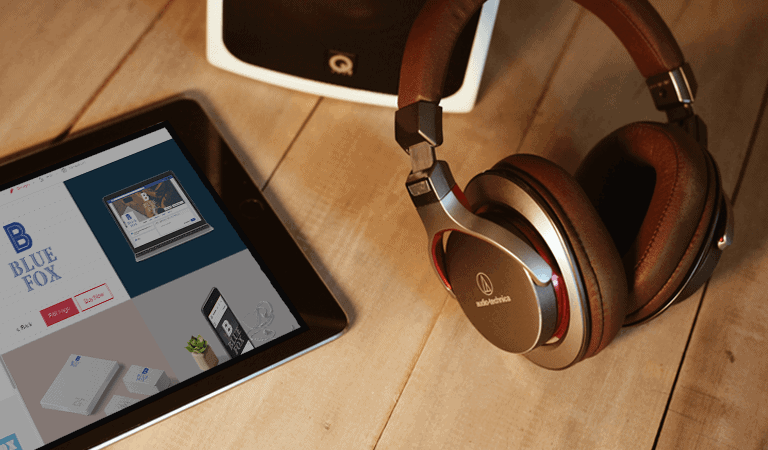
Creating a powerful brand is a key part of starting your business, but it can prove to be a complex process. Branding involves tough decisions and careful planning – and it has the potential to be pricey, pricey, pricey.
While branding is definitely a worthy recipient for hard-earned dollars in the long run, many small businesses (and even some large ones) don’t have large chunks of capital to spend on the process.
But we believe that businesses of all sizes deserve to build a powerful brand – and luckily, there are a bunch of ways to make that happen! Read on for 7 tips to help you build a brand on a budget.
“Working on a tight budget may be a hurdle,
but it’s one your company can
easily clear with some creativity and the right focus.”
Strong brands are built on market research – you need to know who you’re selling to before trying to craft a brand strategy. Your customers experience branding without market research like you’d deal with getting a wedding gift from Great Aunt Rose who’s never met you – maybe you’ll send her a nice thank-you note, but that serving bowl is headed right for the recycling bin the first chance you get.
In other words: Do your homework. While large companies often pay consultants to do market research for them, you can easily cut out these costs by using tools from all over the web. From creating a simple Facebook poll to doing extensive keyword searches, there are a bunch of (free!) ways to figure out who your audience is and get inside their minds. Here are a few recommended tools to get you started:
Find your buying persona, understand their needs, and see how you can help them solve problems. With your research done, you can tweak the design elements of your brand to fit your audience’s demands.
There are all sorts of reasons why a logo is important to your brand, and it’s one of the first things you should nail down after starting a business. But, instead of doling out thousands of $ to a graphic designer like a large corporation would, you can design your business logo with a logo generator – for a price equivalent to buying a cup of coffee.
A logo generator will use the name and purpose of your business to create a unique, memorable logo that’s based on your design preferences.
Also, what’s nice about using a logo generator is that it gives you the ability to take full creative control; you can always edit the fonts, colors, and icons of your logo to get a final product that you love without going over your budget.

Once again – two points for the internet. Gone are the days that you have to all but sell your firstborn to afford a developer who will create a website for you; thankfully, you can now use an online website builder to get a professional-looking website up and running in under a day.
It’s just our luck, too, because this isn’t a step you can skip – every brand needs a website, whether as a source from which to sell products or just as a way to prove that you run an established, legitimate business.
Past research shows that close to 100% of consumers look onlinefirst when searching for products or services, so you’d better hope to have a site that represents your business. Also, when your customers want information about your brand, the first place they’ll go is your website (or social media – but we’ll get there in a minute). Some quality, affordable website builder choices are:
Because website builders are DIY, you can easily make sure the design of your site is in line with your logo’s color and fonts – ultimately creating a cohesive brand identity on the web.
And on that note….
All of this focus on design should be working towards one goal: Creating a durable brand identity.
Your brand doesn’t need bells and whistles to be powerful – many of the best brands don’t rely on expensive gimmicks and stunts. Instead, they’re successful because they communicate their companies’ goals, values, and mission in a clear way.
Spend time thinking about what you want your brand to say. Does your company sell outdoor goods? How can your brand best convey a love for adventure?
Consider how every part of your brand will communicate your larger message, and how customers will perceive the value. By working with a clear focus and striving towards a specific goal, you can cheaply build a brand identity equivalent to one that costs many companies millions.

The 21st century has given brands one of the most useful tools available—social media.
As there are literally billions of people that use social media, these platforms offer young brands a free and easy way to connect to their audiences and build loyalty. A Facebook page, for example, is a wonderful place to showcase your brand personality and increase follower engagement.
There are so many ways to use social media to increase brand awareness, like creating fun competitions that encourage customers to share, or making low-cost Facebook ads that are tailored to a specific demographic.
(See why that market research comes in handy?)
And, if you feel like social media isn’t really your thing, you can use a social media manager to automate the process for you; a post scheduler will help you design and plan posts so you don’t need to think about it in your day-to-day.
Probably the only thing used more than social media is email.
All you have to do is click the “Send” button, and you have direct communication with thousands of customers at a time.
Whether you’re running a promotion or selling a new product, email marketing is an easy way to let your customers know what’s going on in your company – with minimal effort.
(That said, don’t use email as an excuse to spam your customers – no one likes that. Ever.)
There are many email marketing services for small businesses that cost next to nothing, such as:
Creating content is a sound long-term investment, and the only thing it costs you is time.
Articles, guest blog posts, educational videos, and other long-form texts can give you a broader brush with which to paint your brand – generating brand awareness in the process.
But more importantly, good content lets your target audience respect you as an authority; you can answer customers’ questions, bring them educational videos, and give them the advice that makes them trust your brand.
Also, creating content gives you an opportunity to collaborate with other companies in your industry, granting you more exposure through their viewers.
So if you don’t have a blog – start one! It’s a key strategy for organic marketing; your target audience will be searching for the information you provide, and reading your blog could give them their first exposure to your brand.